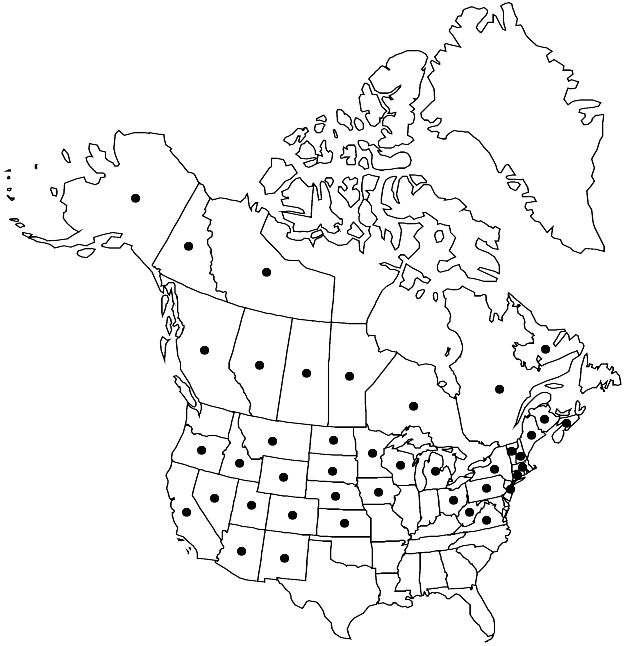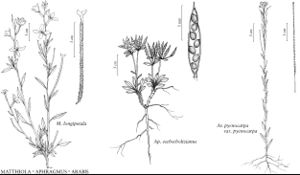Arabis pycnocarpa var. pycnocarpa
Stems usually hirsute basally, rarely glabrescent, trichomes often simple, sometimes branched. Basal leaves: blade surfaces sparsely to densely pubescent, trichomes simple and stalked. Fruits (3.5–) 4–5.8 (–6) cm; style (0.2–) 0.5–1 mm, (rarely stout). 2n = 32.
Phenology: Flowering Mar–Jul.
Habitat: Bluffs, cliffs, ledges, rocky hillsides, open woods, bottom lands, gravel bars, meadows, streamsides, upland prairies, grassy swales, hillsides, stream bottoms
Elevation: 0-2500 m
Distribution

Alta., B.C., Man., N.B., Nfld. and Labr. (Labr.), N.W.T., N.S., Ont., Que., Sask., Yukon, Alaska, Ariz., Calif., Colo., Conn., Idaho, Iowa, Kans., Maine, Mass., Mich., Minn., Mont., Nebr., Nev., N.H., N.J., N.Mex., N.Y., N.Dak., Ohio, Oreg., Pa., S.Dak., Utah, Vt., Va., W.Va., Wis., Wyo., Asia (China), Asia (Japan), Asia (Russian Far East)
Discussion
Some populations in northern Indiana and northern Illinois, [e.g., Herman 8790 (Jo Davies County) and Friesner 19072 (Elkhart County), both at GH] most likely represent hybrids between the two varieties of Arabis pycnocarpa. Trichomes borne proximally on stems of these plants are a mixture of forked and simple. It is expected that hybrids can be found where the ranges of the two taxa overlap.
Selected References
None.
Lower Taxa
"elongated" is not a number."thick" is not a number."dm" is not declared as a valid unit of measurement for this property.
